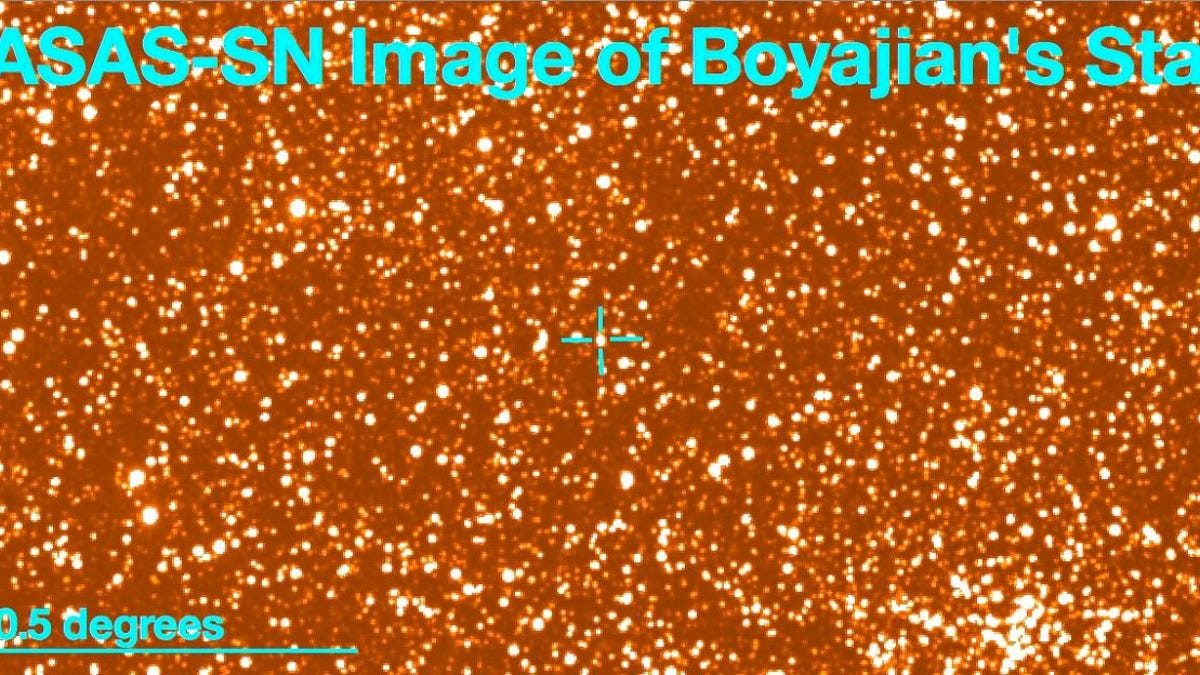Our galaxy's 'most mysterious' star gets even weirder
Don't blame an alien megastructure for the strange dimming of Tabby's Star. New research offers a better explanation than extraterrestrials.
The star KIC 8462852 goes by a lot of different nicknames. It's called Boyajian's Star, Tabby's Star and, if you're into that sort of thing, the "alien-megastructure star." We'll call it Tabby's Star (for astronomer Tabetha Boyajian) since that's the shortest option. The star has displayed some unusual dimming behavior, but a new study led by Carnegie researchers (PDF) found something even stranger: It's also gotten brighter on occasion.
Researchers have offered quite a few interesting explanations for the star's odd, random dimming events, including that the star swallowed a planet or that a massive alien-built megastructure is somehow blocking the light.
The new research looked at data on Tabby's Star reaching back to 2006 and found the star had episodes in 2007 and 2014 when it brightened quite a bit. "The realization that the star sometimes gets brighter in addition to periods of dimming is incompatible with most hypotheses to explain its weird behavior," says Carnegie astronomer Josh Simon.
This illustration shows an artist's vision of what Tabby's Star might look like with a surrounding ring of dust.
The mysteries haven't been solved yet, but scientists are busy working on teasing out the star's secrets. Wednesday, NASA's Jet Propulsion Laboratory highlighted some new information on Tabby's Star that cites dust as the most likely reason for its dimming trend.
The study, lead by University of Arizona, Tucson, astronomer Huan Meng, points to an uneven orbiting dust cloud and describes a smoking gun: "Researchers found less dimming in the infrared light from the star than in its ultraviolet light. Any object larger than dust particles would dim all wavelengths of light equally when passing in front of Tabby's Star."
This will come as a disappointment to fans of the alien-megastructure theory, though scientists won't rule out other possible explanations for why we're seeing the star's brightness change from the vantage point of Earth.
There are still plenty of questions surrounding Tabby's Star. NASA's Kepler space telescope has observed short-term dimming as extreme as 20 percent of the star's brightness, as well as a longer-term dimming trend.
The dust concept would cover the star's loss of brightness over time, but it doesn't necessarily explain several short-term dimming events observed this year. Previous research suggests a swarm of comets could be responsible for the briefer dips in brightness. Astronomers will continue to study the star to try to learn more about its odd habits.
Meng's research team published its findings in The Astrophysical Journal this month with the title "Extinction and the Dimming of KIC 8462852."
The Smartest Stuff: Innovators are thinking up new ways to make you, and the things around you, smarter.
iHate: CNET looks at how intolerance is taking over the internet.


